how to cook dried blackeyed peas
Published July 11, 2017 - Last Updated January 21, 2021
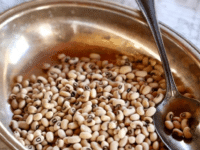
Black-eyed peas are not the most popular legume, but maybe they should be. They are far easier to prepare than most dried beans; they don't require an overnight soak, like many beans do. They are nutritious and a great source of fiber, protein, iron, and other beneficial nutrients. I like to prepare black-eyed peas at home, rather than buying canned. Home preparation is economical, and you won't have to worry about the excess sodium and BPA in many canned beans.
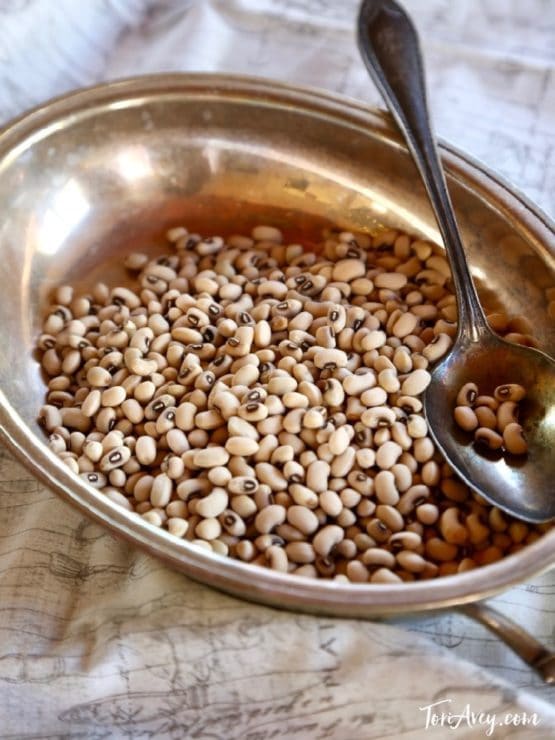
Black-eyed peas are culturally and historically significant during the celebration of the New Year for both Sephardic Jews and those living in the American South. The Jewish tradition comes from the Babylonian Talmud in which Abaye lists nine foods that should be eaten during Rosh Hashanah, the Jewish New Year. Each food listed is representative of a wish to come in the New Year. The black-eyed peas are said to be a symbol for good fortune for several reasons. In fact, a few years back I made a recipe for Black-Eyed Pea Burgers in honor of this tradition.
In Hebrew and Aramaic they are called "rubiyah" and in Arabic "lubiya", both related to Hebrew words "l'harabot" and "harbeh" meaning "to increase" and "many." When you eat black-eyed peas at the Rosh Hashanah Seder, you are inviting wealth and fortune in the coming year. Black-eyed peas are also a reminder to multiply your mitzvot (good deeds) in the coming year.
In the South, black-eyed peas have been a symbol of good fortune since the Civil War. This American tradition originated in West Africa, where black-eyed peas were domesticated over 5,000 years ago. They made their way to America on slave ships, and were planted in the colonies in the early 1700's.
Known then as cowpeas, the plant became an important part of the slave's diet. During the Civil War, when William Sherman's troops swept in, destroying and stealing the majority of Southern crops, the black-eyed peas were left behind. Though they may not have been anyone's first choice, black-eyed peas proved to be an important source of nutrition for the starving Confederate soldiers.
Here, black-eyed peas are often eaten with other foods that symbolize growth and wealth. For example, golden cornbread and greens that swell when they are cooked representing both paper money and wealth.
It is possible that these Sephardic and African American traditions commingled during the 18th century, when many Jewish homes in the South had African American cooks. The dish is now popular during both New Year's Day and Rosh Hashanah celebrations.
Cooking black-eyed peas is a little different than cooking other dried beans because they don't need to be soaked, which can be a great benefit if you are pressed for time. The method below uses a ratio of 10 cups of water per pound of dried black-eyed peas, if you plan to use a different amount, please adjust accordingly using this ratio.
Hungry for more? Find me on Facebook, Twitter, Pinterest, YouTube and Instagram for all the latest updates!
Recommended Products:
Colander
Sauce Pan
We are a participant in the Amazon Services LLC Associates Program, an affiliate advertising program designed to provide a means for us to earn fees by linking to Amazon.com and affiliated sites. As an Amazon Associate I earn from qualifying purchases.
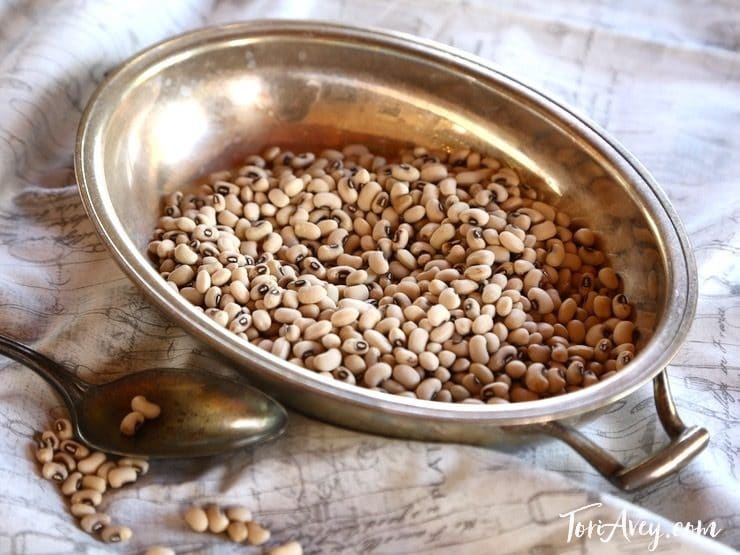
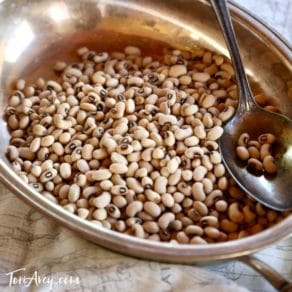
How to Cook and Freeze Dried Black Eyed Peas
Learn how to cook dried black eyed peas to prepare them for use in recipes. Includes storage and freezing techniques.
Prep Time 1 hr
Cook Time 30 mins
Total Time 1 hr 30 mins
Adjust Total Servings 10 servings
- 1 lb dried black-eyed peas (please refer to instructions below if you plan to cook more or less)
- 10 cups water, plus more for quick soaking
- salt (optional)
You will also need: large pot with lid, colander, freezer bags or containers (optional)
1 pound (16 ounces) of dried black eyed peas = 2.8 pounds (45 ounces) cooked beans, or a little over 5 1/2 cups of cooked beans.
-
The method below uses a ratio of 10 cups of water per pound of dried black-eyed peas, if you plan to use a different amount, please adjust accordingly using this ratio.
Quick soaking your black-eyed peas isn't a must, but I recommend it for speeding up the cooking process. Place your dried peas in a large pot and cover with water. Bring to a boil for 2 minutes. Remove the pot from the heat and allow the peas to soak for 1 hour. You may notice that the water level has decreased and the peas have grown in size, indicating that they have absorbed some of the water. This is a good sign!
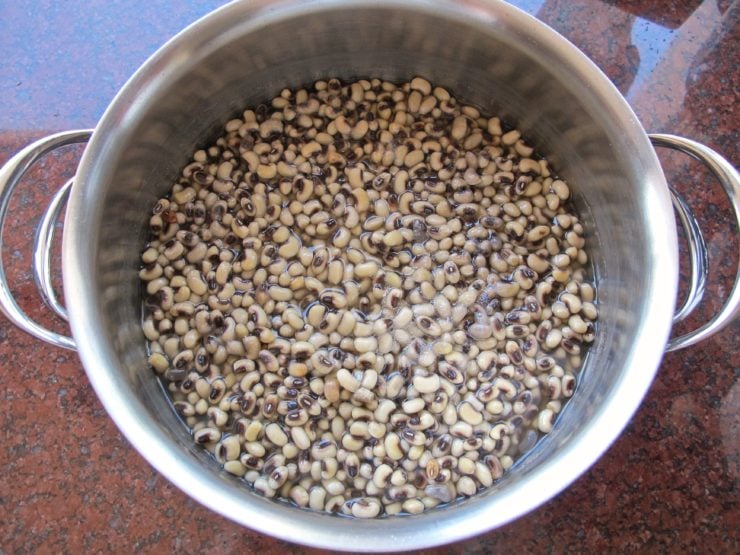
-
After soaking, drain the peas and give them a good rinse.
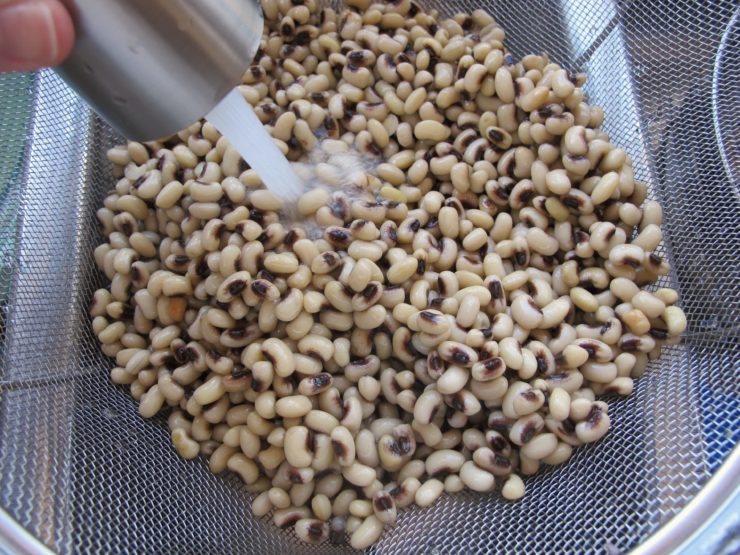
-
Place the beans in a large pot and cover again with the same ratio of fresh water. It is important to use fresh water for boiling; the soaking water contains oligosaccharides, released from the beans during soaking, that can lead to digestive discomfort. Add salt to the cooking water if desired to give the beans more flavor (I use about 1 tablespoon salt for every 10 cups of water). Place on the stovetop and bring to a boil, then reduce to a simmer. Simmer for 30 minutes, or until you reach desired tenderness. I recommend stirring the beans a few times throughout the cooking process so that the beans at the bottom of the pot don't soften before the beans at the top.
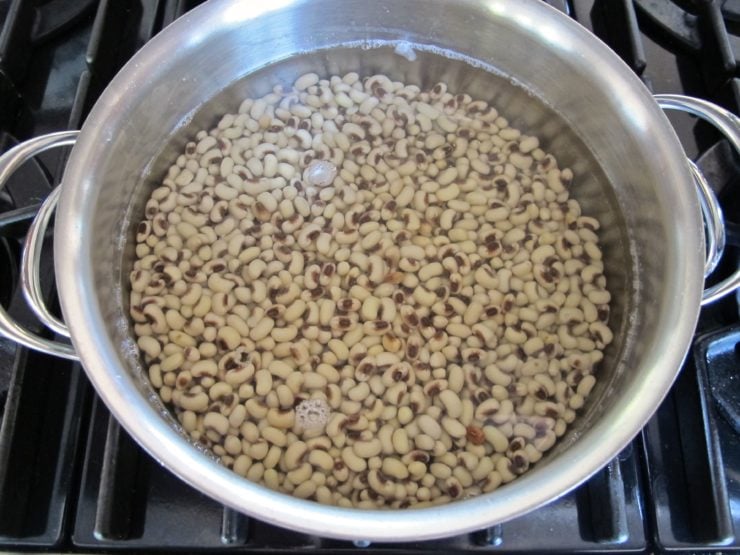
-
Drain the peas in a colander. They are now cooked, prepared, and ready to use in recipes or however you'd like.
If you plan to freeze the beans, allow them to cool first. You can speed up this process by rinsing them with cold water. Then transfer them to a freezer safe container, I recommend resealable bags, and freeze until needed. I like to measure out 1 ¾ cups of beans in each bag, which is equivalent to the amount in a standard sized can. They will keep in the freezer for up to 6 months.

-
When ready to use your frozen black-eyed peas, remove them from the freezer and thaw. They can be reheated on the stovetop, added to soups and stews or used however you would use canned black-eyed peas.
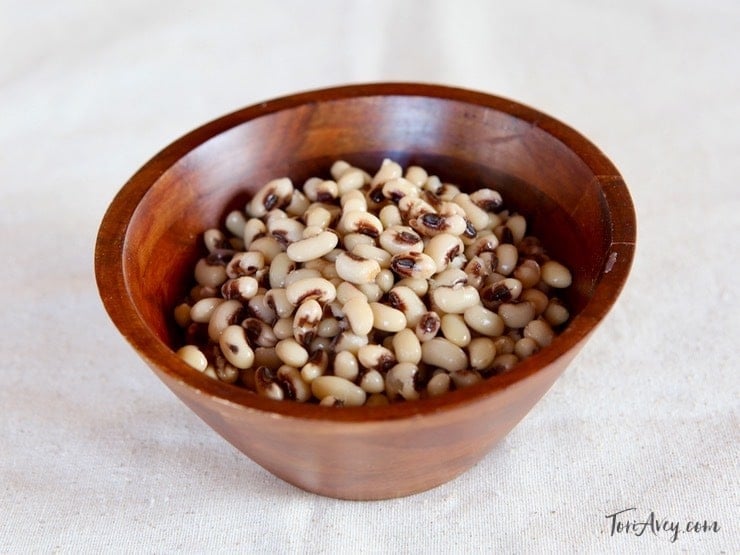
Nutrition Facts
How to Cook and Freeze Dried Black Eyed Peas
Amount Per Serving
Calories 152
% Daily Value*
Sodium 19mg 1%
Potassium 504mg 14%
Carbohydrates 27g 9%
Fiber 4g 17%
Sugar 3g 3%
Protein 10g 20%
Vitamin A 25IU 1%
Vitamin C 0.7mg 1%
Calcium 57mg 6%
Iron 3.7mg 21%
* Percent Daily Values are based on a 2000 calorie diet.
Let Us Know How It Was In The Comments.
Nutritional information should be considered an estimate only; please consult a registered dietician, nutritionist, or your physician for specific health-related questions. Read more here. Please note that the recipe above is published using a recipe card plugin, with preexisting software which can auto-calculate metric measurements, as well as change the number of servings. Metric conversions and changes to the number of servings (resulting in different ingredient amounts) will only appear in the ingredient list, and are not changed within the step-by-step directions of the recipe.
Black-Eyed Pea Recipe Ideas:
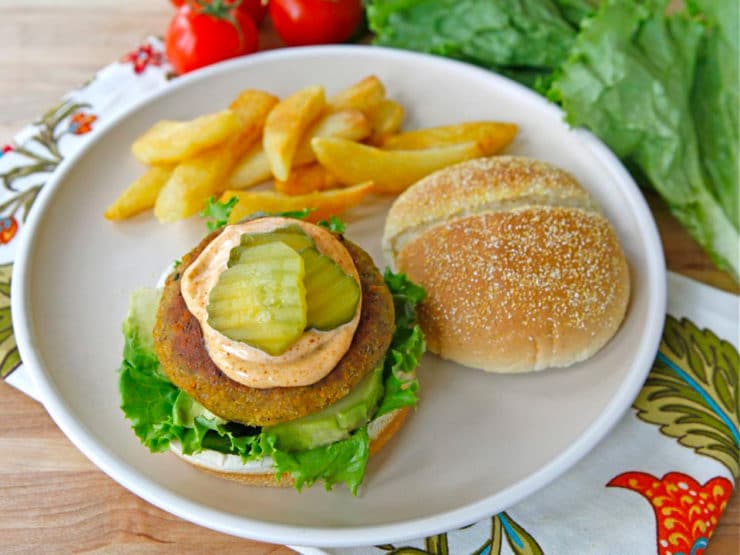
Black-Eyed Pea Burgers
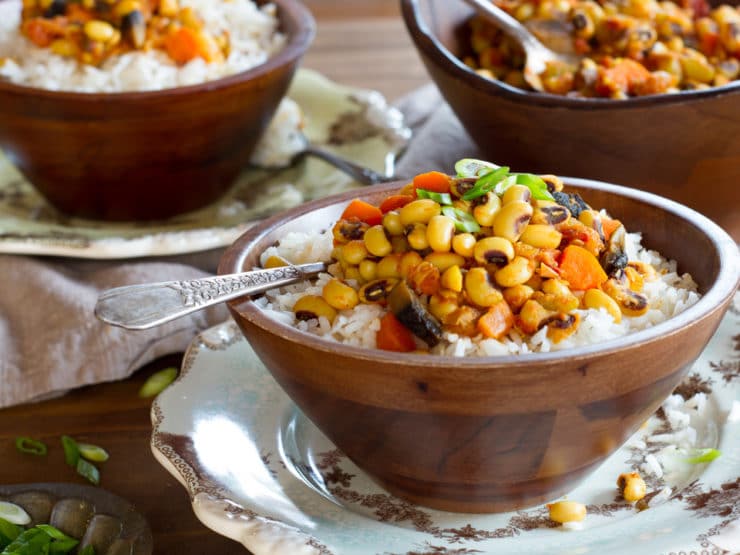
Vegan Hoppin' John
Stay in touch with me on Facebook, Twitter, Pinterest, YouTube and Instagram. Did you make one of my recipes? Tag @toriavey & hashtag #toriskitchen on Instagram or Twitter… I want to see!
how to cook dried blackeyed peas
Source: https://toriavey.com/toris-kitchen/how-to-cook-dried-black-eyed-peas/
Posted by: connersooking.blogspot.com

0 Response to "how to cook dried blackeyed peas"
Post a Comment